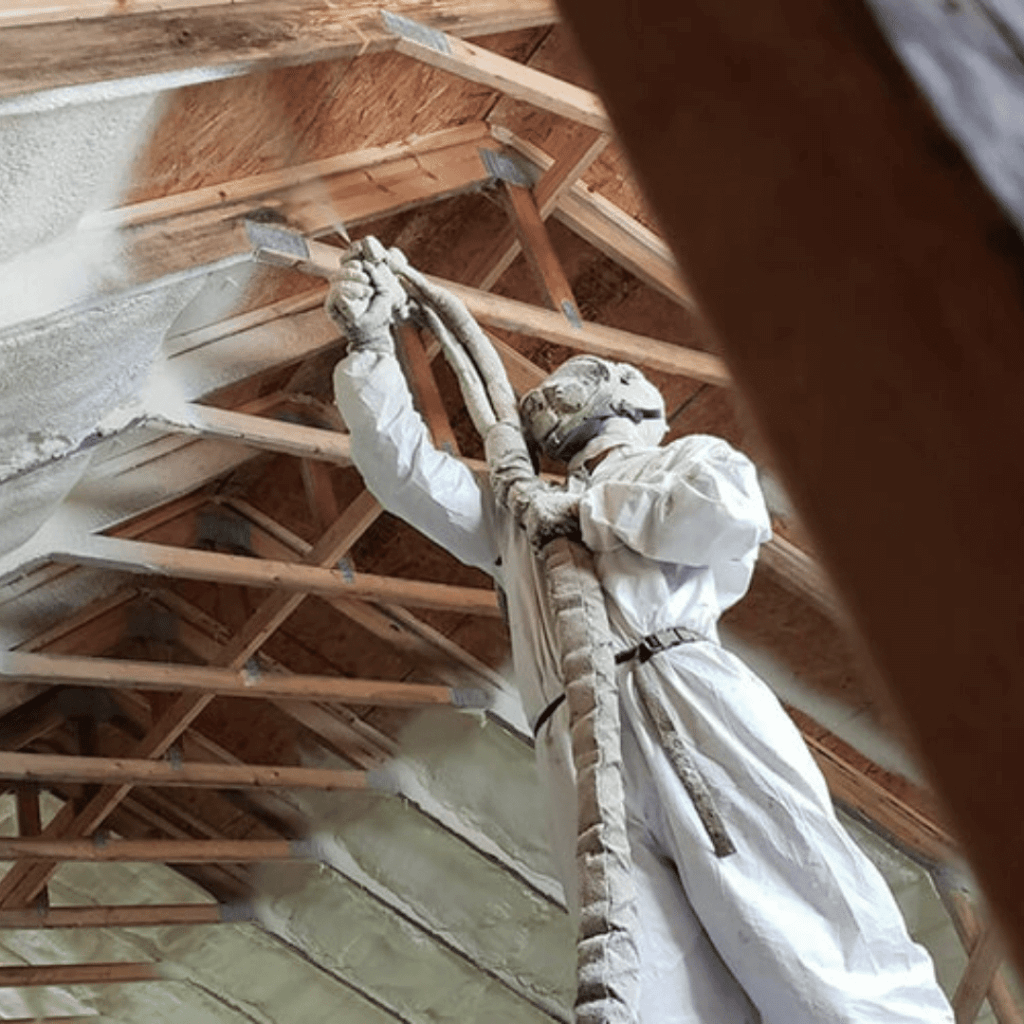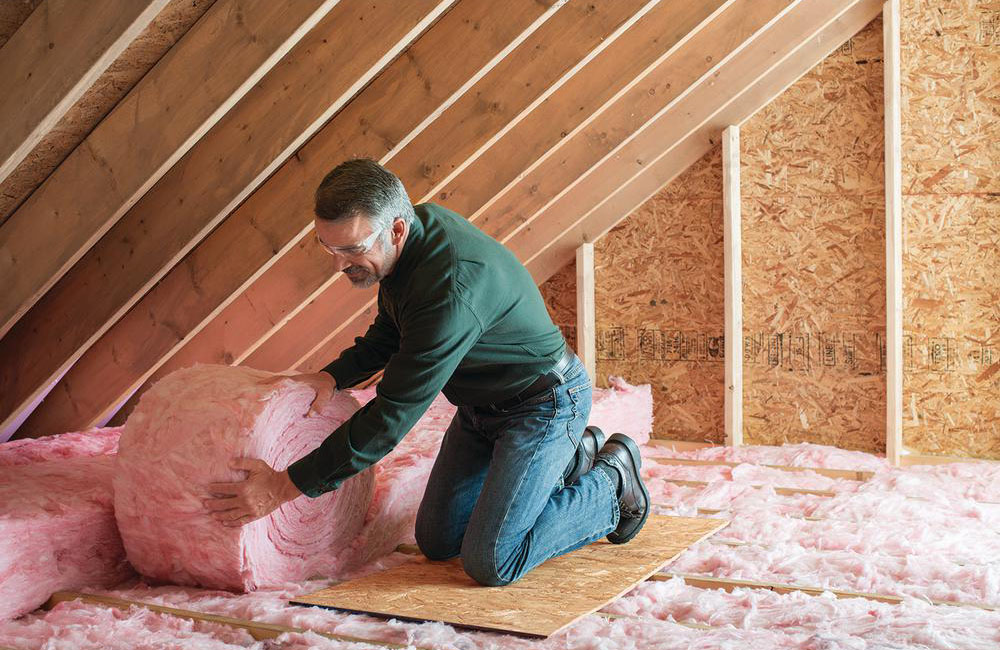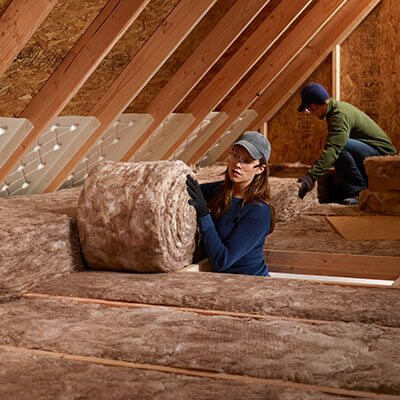How Attic Insulation DFW Can Transform Your Home's Environment Control
How Attic Insulation DFW Can Transform Your Home's Environment Control
Blog Article
Discover the Different Kinds Of Attic Insulation and Their One-of-a-kind Advantages for Your Home's Energy Performance

Fiberglass Insulation
Fiberglass insulation is just one of one of the most typically made use of materials for attic insulation as a result of its outstanding thermal efficiency and cost-effectiveness. Made up of tiny glass fibers, this material successfully catches air, creating a protecting obstacle that aids keep consistent indoor temperature levels. Its high R-value per inch makes it specifically efficient at withstanding warmth transfer, which is essential for power preservation in homes.
Installation of fiberglass insulation is fairly uncomplicated, often offered in batts or loose-fill types, fitting different attic room setups. Furthermore, it is non-combustible and immune to dampness, reducing the risk of mold advancement. This toughness adds to its long life, making fiberglass a viable long-term investment for homeowners.
Furthermore, fiberglass insulation is typically produced from recycled materials, which improves its eco-friendliness. The material can also contribute to soundproofing, minimizing sound transfer in between areas. While it is necessary to put on safety equipment throughout setup to stay clear of irritability from the fibers, the overall benefits of fiberglass insulation, including energy savings and ecological factors to consider, make it a preferred option for improving attic performance and advertising a comfy living setting.
Spray Foam Insulation
Spray foam insulation is a very efficient choice for attic room insulation, understood for its remarkable air securing and thermal efficiency. This cutting-edge insulation product is composed of a blend of isocyanate and polyol resin, which, when integrated, broadens quickly to fill up gaps and cavities in the attic room. Its capability to comply with different surfaces guarantees a constant barrier versus air leakages, dramatically minimizing heat loss throughout cooler months and warm gain during warmer seasons.
Among the crucial advantages of spray foam insulation is its high R-value per inch, which means it provides outstanding thermal resistance in a reasonably slim application. This is particularly helpful in attics where area is often restricted. Furthermore, spray foam can aid reduce wetness accumulation, reducing the threat of mold and mildew development, which can be destructive to both the structure and interior air quality.
While the preliminary cost of spray foam insulation may be greater than standard alternatives, its lasting power savings, combined with enhanced comfort and boosted home value, make it a worthwhile financial investment for house owners looking for enhanced energy efficiency. Attic Insulation DFW. In general, spray foam insulation attracts attention as an efficient service for enhancing attic room insulation
Cellulose Insulation

Cellulose insulation is a prominent option for attic room insulation, primarily made up of recycled paper products treated with fire resistants. This environmentally pleasant option is recognized for its outstanding thermal efficiency, efficiently minimizing warm transfer in both summer season and cold weather. The thick composition of cellulose allows it to fill up gaps and spaces in attic room spaces, giving a smooth obstacle against air leaks.
One of the considerable benefits of cellulose insulation is its capability to stand up to mold and insects, owing to the fire resistant treatments used during manufacturing. In addition, it flaunts a high R-value per inch, which translates right into remarkable power effectiveness. Homeowners can anticipate reduced heating & cooling prices as an outcome of boosted insulation.
Installation is usually achieved via blowing loose cellulose into the desired area, enabling a effective and quick procedure. This approach also minimizes disturbance to the existing structure. In addition, cellulose insulation has a fairly low ecological influence, as its production procedure uses recycled products, contributing to lasting structure practices.
Rock Wool Insulation
Among the various options for attic insulation, rock wool, likewise called mineral wool, sticks out due to its excellent thermal and acoustic efficiency. Made from recycled or all-natural materials, rock woollen is developed by thawing rock and spinning it right into fibers, causing an item that uses exceptional insulation residential or commercial properties.
One of the considerable view it advantages of rock wool insulation is its high R-value, which shows its effectiveness in resisting warmth circulation. This characteristic not only improves power performance yet likewise adds to keeping a comfy indoor temperature year-round. Additionally, rock woollen is naturally fireproof, making it a more secure option for homes as it can hold up against heats without melting or releasing poisonous fumes.
Additionally, rock woollen insulation excels in find this soundproofing capacities, effectively minimizing noise transmission between areas and from outside sources. On the whole, rock wool insulation gives a thorough service for boosting power effectiveness, safety and security, and comfort in household setups.
Radiant Obstacle Insulation
Radiant barrier insulation functions as a reliable service for minimizing warm transfer in attic rooms, specifically in warmer environments. This kind of insulation jobs by mirroring radiant warm away from living rooms, thereby decreasing the quantity of warmth that enters a home during heat - Attic Insulation DFW. Typically composed of an extremely reflective material, such as aluminum foil, radiant barriers are installed in attics, facing the roofing, where they can obstruct incoming heat from the sun
The primary benefit of radiant barrier insulation is its ability to lower cooling costs. By reflecting heat as opposed to absorbing it, radiant barriers can help preserve a more steady indoor temperature, lowering the work on cooling systems. This efficiency translates right into lower energy costs and boosted comfort for property owners.
Along with power financial savings, glowing barriers can also add to boosted interior air high quality. By decreasing heat build-up, they assist lessen moisture levels, which can prevent mold and mildew development and improve general air blood circulation. When set up correctly, glowing obstacle insulation can be a very useful enhancement to any type of energy-efficient home, making it a worthy factor to consider for home owners aiming to improve their attic insulation approach.
Final Thought
In verdict, comprehending the various types of attic room insulation-- fiberglass, spray foam, cellulose, rock wool, and radiant obstacles-- enables house owners to make informed decisions relating to power efficiency. By picking the appropriate insulation product, considerable decreases in energy expenses from this source can be accomplished, along with improvements in interior comfort.

In verdict, comprehending the different kinds of attic room insulation-- fiberglass, spray foam, cellulose, rock wool, and glowing obstacles-- allows homeowners to make informed choices pertaining to energy efficiency.
Report this page